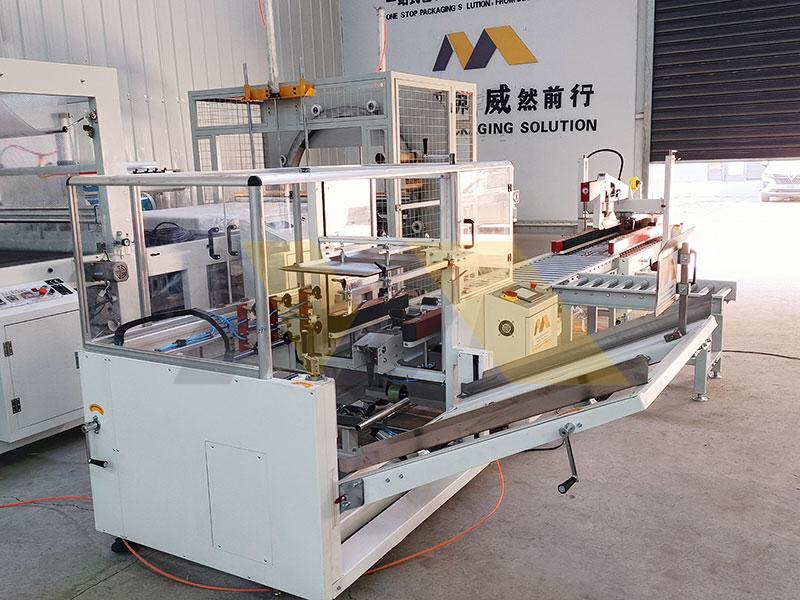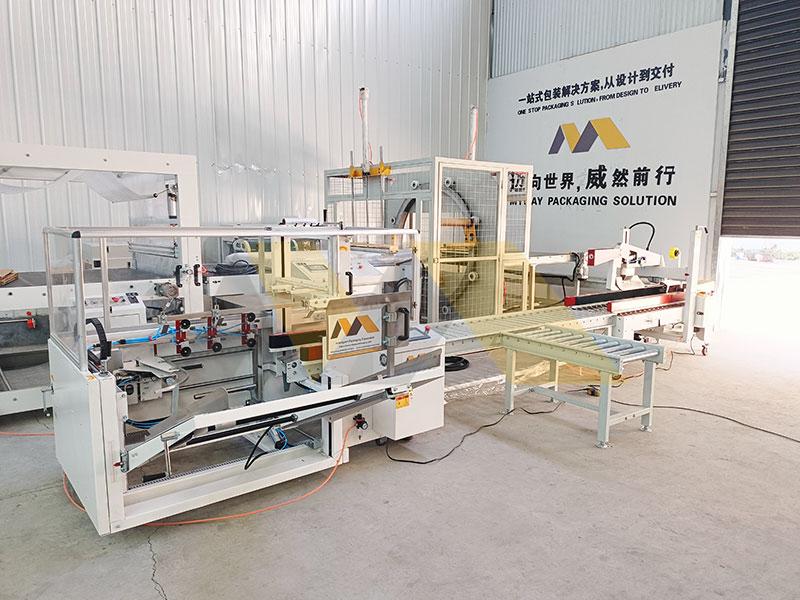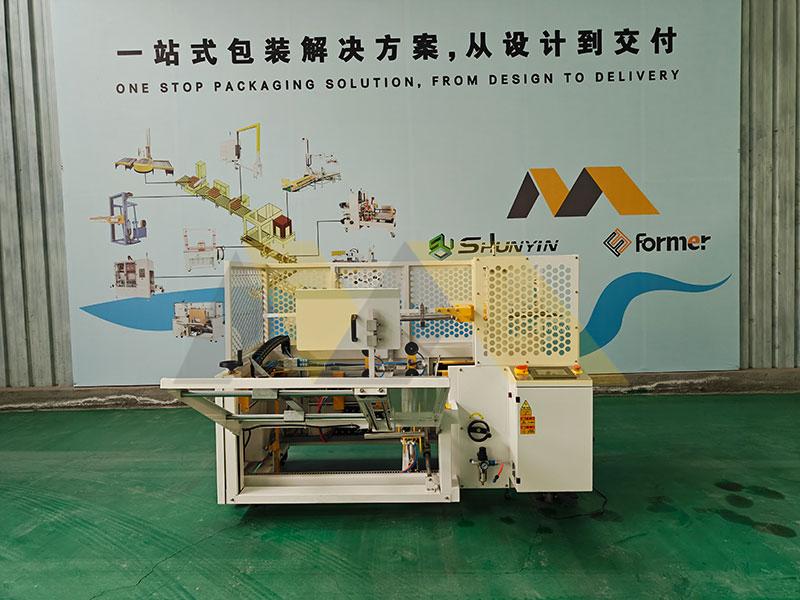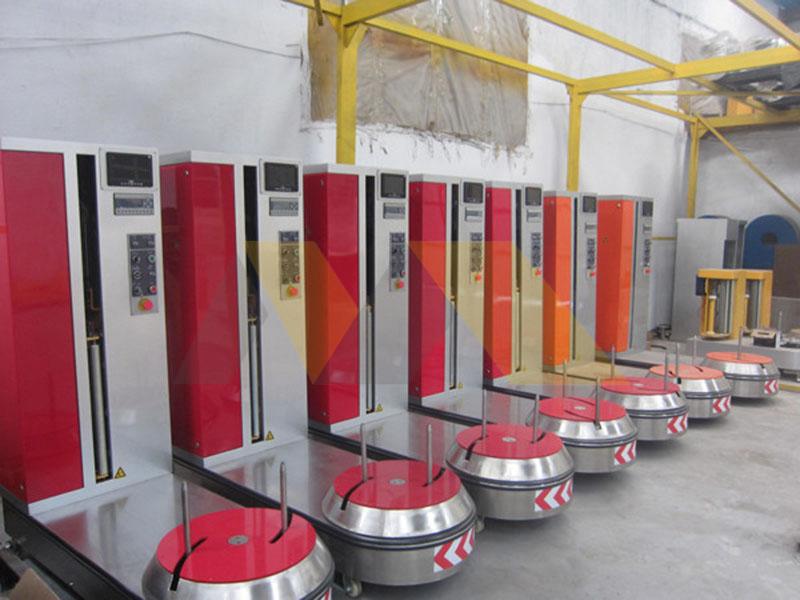
Buying machinery overseas feels like a leap of faith, doesn’t it? You worry if the quality matches the promises, fearing breakdowns and costly delays. Verifying quality before you buy is essential.
To verify luggage wrapping machine quality from overseas, rigorously vet the supplier’s reputation and experience. Insist on detailed technical specifications, inquire about core component brands (motor, PLC), and understand their quality control (QC) process. Request verifiable certifications (like CE), review material specifications (e.g., steel thickness), and ideally, conduct a pre-shipment inspection (PSI) either yourself or via a third party. Secure clear quality guarantees in your contract.
Understanding these steps is crucial. Let’s start by looking at how we judge quality in a related product – the luggage itself – and see how those principles apply to the machine.
How can you tell quality luggage?
Choosing luggage can be confusing, right? You see rows of suitcases, but how do you spot the one that won’t fall apart after one trip? There are clues.
Quality luggage often features durable shell materials like polycarbonate or ballistic nylon, sturdy and smooth-rolling wheels (spinner or roller), robust telescoping handles with minimal wobble, reliable zippers (like YKK brand), reinforced corners, and strong stitching. Reputable brands usually offer good warranties, signaling confidence in their product’s construction and longevity. It feels solid and well-built.
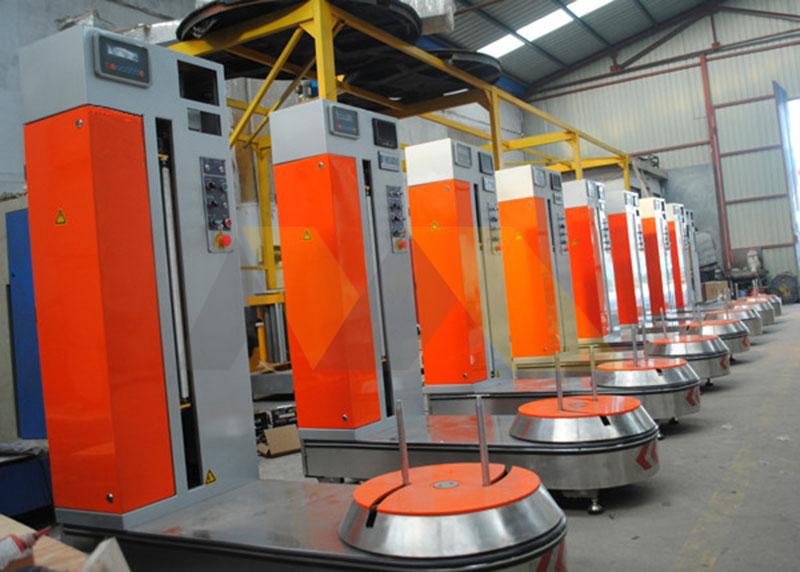
These quality markers for luggage have parallels when assessing machinery. If you’re evaluating our wrapping machines, focusing on build quality and components is just as important. Let’s discuss the specifics you should look for.
Dive Deeper: From Luggage Quality Tells to Machine Verification
It might seem like a jump from a suitcase to an industrial machine, but the underlying principles of assessing quality are surprisingly similar. Just like you wouldn’t buy flimsy luggage for international travel, you shouldn’t invest in poorly built machinery for your business. As a manufacturer, I see these parallels constantly. Let’s break down how judging luggage quality translates to verifying our luggage wrapping machines.
-
Luggage Materials (Polycarbonate/Ballistic Nylon) -> Machine Construction Materials (Steel Gauge, Component Quality):
- The Suitcase Shell: A high-quality suitcase uses materials known for impact resistance and durability. You can often feel the difference – it doesn’t feel brittle or overly flexible.
- The Machine Frame & Body: Similarly, the foundation of our wrapping machine is its frame, typically made of steel. The thickness (gauge) of the steel matters significantly. A heavier gauge means more rigidity, better vibration dampening, and longer life, especially under continuous use. Ask the supplier for the steel specification. Thin steel might lower the cost but leads to premature wear or instability. We use high-grade carbon steel, properly welded and treated for corrosion resistance. I always emphasize that the frame is the skeleton – it needs to be strong.
- Internal Components: Beyond the frame, consider the materials of critical parts. Are rollers made of durable coated steel or cheap plastic? Is the turntable robust? Are wiring conduits metal or flimsy plastic? These details, like the quality of fabric lining or pocket materials in luggage, add up to overall durability.
-
Luggage Zippers/Wheels/Handles -> Machine Core Components (Motors, PLC, Sensors, Bearings):
- The Moving Parts of Luggage: Zippers (especially brands like YKK), smooth-rolling wheels (spinners are complex), and sturdy, multi-stage handles are crucial. These are the parts that take the most stress and are common failure points on cheap luggage.
- The Heart of the Machine: For a luggage wrapper, the critical components are:
- Motors: Turntable drive motor, film carriage lift motor, pre-stretch motor(s). Are they from reputable brands (e.g., Siemens, Schneider, or reliable Chinese brands known for industrial use)? What are their power ratings? Are they appropriately sized for continuous duty? We specify motor brands known for reliability because a motor failure halts production.
- PLC (Programmable Logic Controller): This is the machine’s brain. Is it a well-known brand (e.g., Siemens, Omron, Mitsubishi, Delta)? Using standard, reliable PLCs makes troubleshooting and potential future modifications much easier. Some low-cost machines might use obscure or proprietary controllers that are hard to support.
- Sensors: Photo-eyes for detecting luggage height, safety sensors, limit switches. Reliable sensors ensure proper wrap cycles and safe operation.
- Bearings: Turntable slew bearing, roller bearings. High-quality bearings ensure smooth, quiet operation and long life. Grinding noises or excessive wobble can indicate cheap bearings.
- Film Carriage: This is complex. How is tension controlled? How does the pre-stretch system work (is it powered pre-stretch for efficiency)? The quality of the rollers and tensioners here directly impacts wrap quality and film usage.
-
Luggage Stitching/Assembly -> Machine Workmanship (Welds, Wiring, Fit & Finish):
- How Luggage is Put Together: Look at the stitching on fabric luggage, the alignment of shell halves, the secure attachment of handles and wheels. Messy work indicates poor QC.
- How the Machine is Built: Examine the quality of welds on the frame – are they clean and consistent? Is the wiring inside the control panel neat, labeled, and properly routed in conduits? Do panels fit together well? Is the paint or powder coating applied evenly and durable? Sloppy assembly often hints at deeper quality issues. We have specific QC checkpoints for weld quality and electrical panel neatness because it reflects overall manufacturing discipline.
-
Luggage Warranty -> Machine Warranty & Support:
- Manufacturer Confidence: A good warranty on luggage shows the brand stands behind its product.
- Supplier Commitment: Similarly, a clear warranty policy for the machine is crucial. What does it cover (parts, labor)? For how long? Critically, how is warranty service handled from overseas? Ask about spare parts availability – can you easily order common wear parts? What level of technical support is offered (manuals, video calls, troubleshooting help)? A supplier confident in their quality will offer a reasonable warranty and have clear support processes. We provide a standard warranty and maintain stock of critical spares for quick shipment.
Just like you’d inspect luggage instore, when buying a machine overseas, you need to ‘inspect’ it remotely through detailed questions, requests for photos/videos of specific components, understanding the specifications, and ideally, a final pre-shipment check. Don’t just trust the glossy brochure; dig into the details like you would when choosing luggage you need to rely on.
What to avoid when buying luggage?
We’ve all made bad purchases. When it comes to luggage, what are the red flags, the things you should definitely steer clear of to avoid disappointment and wasted money?
Avoid luggage with overly thin or brittle-feeling plastic shells, flimsy zippers that snag easily, wobbly handles that don’t lock firmly, wheels that stick or don’t roll smoothly, and very low price points from unknown brands with no warranty. Also, avoid buying luggage that’s clearly the wrong size or weight for airline restrictions or your typical travel needs.
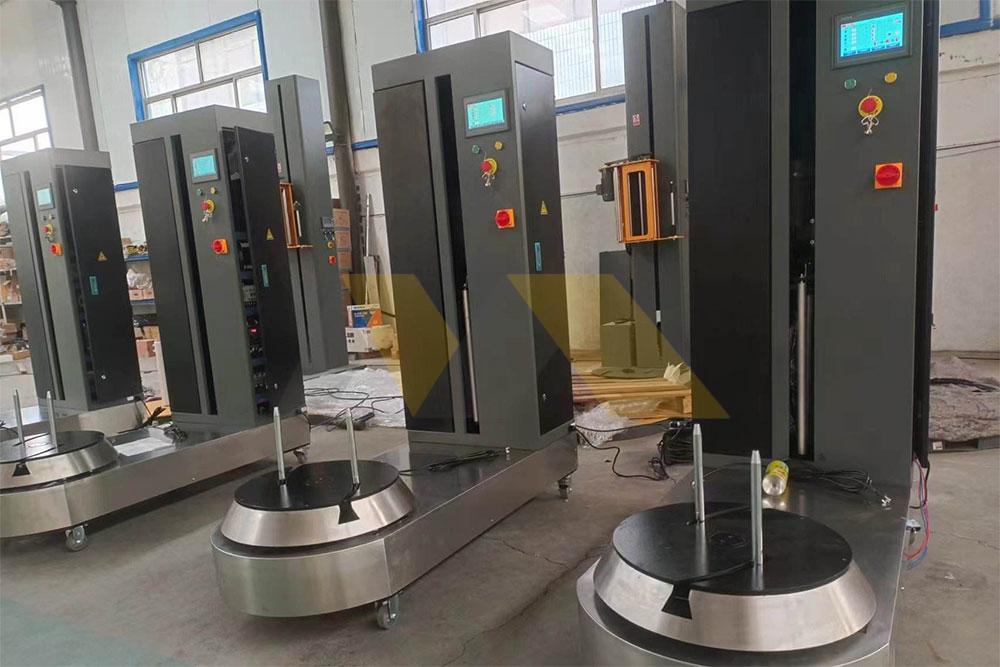
These avoidance tips for luggage directly mirror critical mistakes to avoid when sourcing machinery overseas. Recognizing these pitfalls can save you significant headaches and costs. Let’s discuss how to sidestep these issues with wrapping machines.
Dive Deeper: Avoiding Pitfalls in Machine Procurement
The disappointment of a suitcase handle breaking mid-trip is frustrating. The failure of an industrial machine you imported for your business can be catastrophic, leading to downtime, lost revenue, and costly repairs. Avoiding common pitfalls is crucial. Let’s translate the "what to avoid in luggage" list into actionable advice for buying luggage wrapping machines from overseas suppliers like us.
-
Avoid Flimsy Materials/Construction -> Avoid Unverified Low-Spec Machines:
- Luggage: That super cheap suitcase might feel light, but the plastic cracks easily.
- Machine: The lowest price isn’t always the best value. If a machine quote seems significantly cheaper than competitors, ask why. Are they using thinner gauge steel? Lower-spec motors? A less reliable PLC brand? Unproven sensor technology? Some suppliers might cut corners on component quality or construction to offer a rock-bottom price. This often leads to frequent breakdowns and higher long-term costs. Action: Insist on a detailed Bill of Materials (BOM) or component list specifying brands and key specs for motors, PLC, drives, and sensors. Don’t rely on vague descriptions like "high-quality motor." Ask for specifics. I’ve seen competitors use undersized motors that overheat under continuous load – a classic cost-cutting measure to avoid.
-
Avoid Weak Zippers/Handles/Wheels -> Avoid Suppliers Who Gloss Over Known Weak Points:
- Luggage: These are the parts that fail first on cheap luggage.
- Machine: Every machine type has potential wear points or common issues. A trustworthy supplier should be upfront about these and explain how their design mitigates them or what maintenance is required. For luggage wrappers, common points to discuss include:
- Film Tension Control: How is consistent tension maintained?
- Turntable Bearing: What type is used? What’s its load rating and expected life? How is it lubricated?
- Film Cutting/Clamping Mechanism: How reliable is it? What maintenance does it need?
- Pre-stretch Rollers: What material are they? How are they cleaned?
Action: Ask the supplier about common maintenance tasks and potential failure points. If they claim their machine never has issues or requires no maintenance, be skeptical. A good supplier provides detailed maintenance schedules and troubleshooting guides. We provide these proactively.
-
Avoid Poor Reviews/Unknown Brands -> Avoid Suppliers with No Proven Track Record or Transparency:
- Luggage: Buying from a brand nobody has heard of, with no reviews, is risky.
- Machine: Be wary of suppliers with:
- No verifiable export history, especially to your region (North America, Europe have specific expectations/standards).
- No customer references or case studies they are willing to share.
- A poor or non-existent website with limited information.
- Vague or evasive answers to technical questions.
- Reluctance to allow factory audits (in person or virtual).
- No presence on established B2B platforms (like Alibaba Gold Supplier status, though even this requires diligence) or poor ratings there.
- Concerns about forged certificates (as Lambert experienced) – always verify certifications independently if possible.
Action: Do your due diligence. Search online for reviews or feedback. Ask for references (and actually contact them!). Verify their business registration and certifications. Look for signs of professionalism and transparency. We are happy to provide references and welcome audits because we are confident in our operations.
-
Avoid Wrong Size/Weight -> Avoid Buying a Machine Mismatched to Your Needs:
- Luggage: Buying a huge suitcase for short trips or a tiny carry-on when you need to pack a lot is inefficient.
- Machine: Don’t assume a standard machine will work. Clearly define your requirements:
- What are the dimensions (L x W x H) and weight of the largest and heaviest items you need to wrap?
- What is the required throughput (bags per hour)?
- What are your power supply specifications (Voltage, Hz, Phase)?
- Are there space constraints for installation?
- Do you need specific features (e.g., top press for unstable loads, integrated scale, specific pre-stretch percentage)?
Action: Provide the supplier with detailed information about your application. Review the machine’s technical specifications carefully (turntable diameter/max load size, wrapping height, weight capacity, speed) to ensure it meets or exceeds your needs. Buying an undersized or under-spec’d machine leads to inefficiency, poor wrap quality, or premature failure. We always ask detailed questions about the application before recommending a specific model or configuration.
Avoiding these pitfalls requires diligence and asking the right questions. It’s about moving beyond the surface appeal (like a suitcase’s color) and focusing on the underlying factors that determine long-term performance and reliability.
What to look out for when buying luggage?
So, you know what to avoid. Now, what positive signs or features should you actively seek out when you’re determined to buy good, reliable luggage that will last?
Look for luggage constructed from demonstrably durable materials (polycarbonate, aluminum, high-denier nylon), smooth and sturdy multi-directional wheels (spinners) or robust inline skate wheels, strong telescoping handles that lock securely at multiple heights, reliable and lockable zippers (TSA-approved locks are common), reinforced corners for impact protection, a comprehensive warranty, and features that suit your travel style (like expandable sections or organizational pockets).
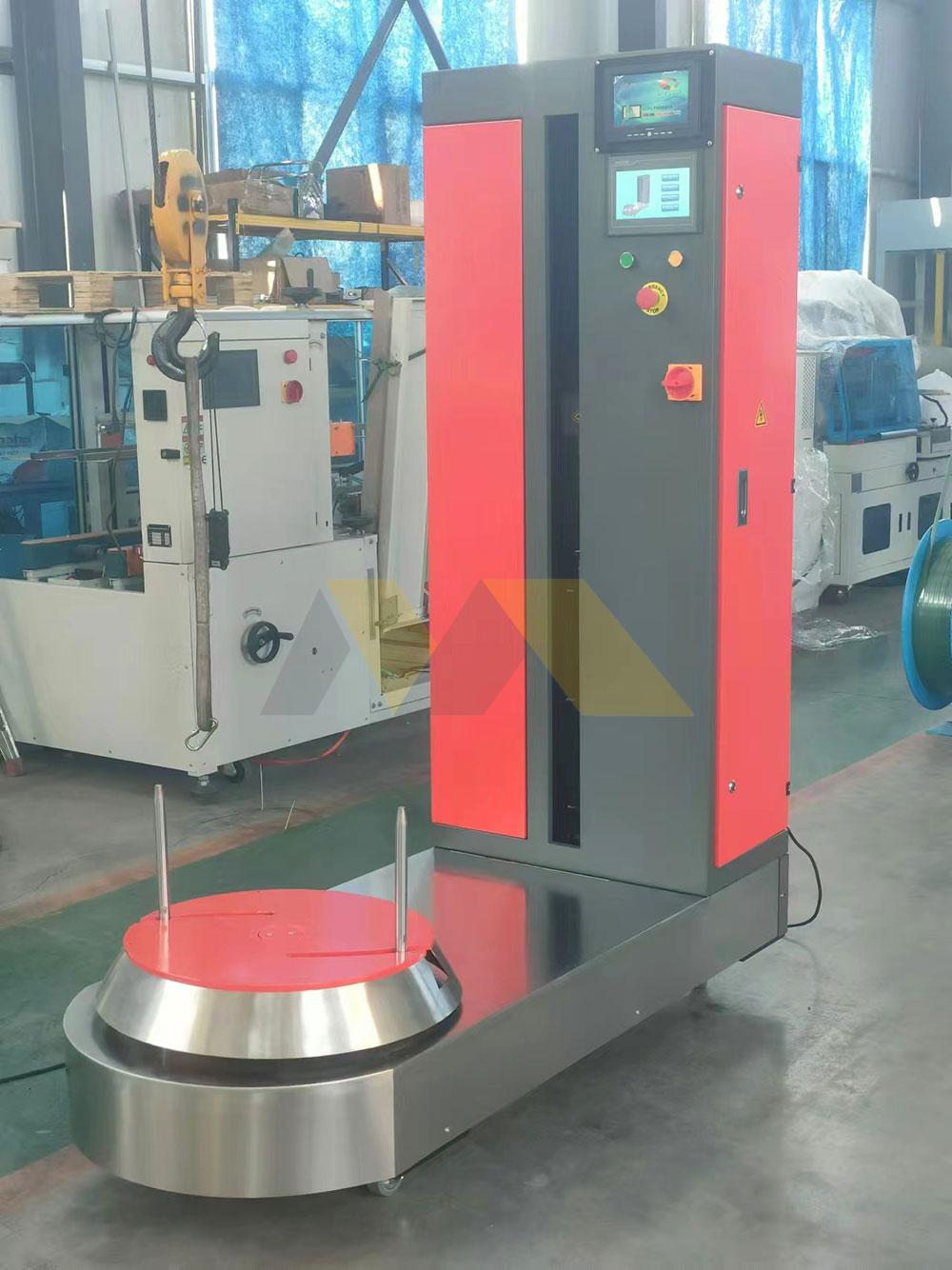
These positive indicators for luggage translate directly into what you should actively look for when verifying the quality of an overseas luggage wrapping machine. Let’s explore these key verification points.
Dive Deeper: Actively Seeking Quality Indicators in Machinery
Just as you’d actively look for positive features on luggage, you need a checklist of quality indicators when evaluating a wrapping machine from an overseas supplier. Building on our previous points, here’s what to proactively seek and verify:
-
Look for Durable Materials -> Verify Robust Construction & Component Specs:
- Luggage: You check the shell material, the fabric denier.
- Machine: Don’t just accept claims of "heavy-duty steel." Actively Seek:
- Specific Steel Gauge: Ask for the gauge or thickness (e.g., 3mm, 5mm) used for the main frame, turntable, and mast. Request photos showing cross-sections if possible.
- Component Brand Confirmation: Get written confirmation (in the quote or Proforma Invoice) of the brands used for critical components like the PLC, main motors, frequency inverters (VFDs), and key sensors. If they list "Optional: Siemens PLC," clarify what brand is standard in the quoted price.
- Quality Finish: Look for signs of good surface treatment – smooth powder coating or durable paint, designed to resist corrosion in an industrial environment. Request close-up photos of the finish and welds.
-
Look for Smooth Wheels/Handles -> Verify Operational Performance & Functionality:
- Luggage: You spin the wheels, extend the handle – you test its function.
- Machine: You need to verify it operates smoothly and correctly. Actively Seek:
- Pre-Shipment Inspection (PSI): This is arguably the most crucial step. Either visit the factory yourself before shipment, send a trusted agent, or hire a third-party inspection service (like SGS, Bureau Veritas, QIMA).
- Video Evidence: At a minimum, request detailed videos of your specific machine (identified by serial number) undergoing testing before shipment. This should show:
- The machine running a full wrap cycle with a load similar to yours (if possible, send sample luggage or specify dimensions/weight).
- Smooth turntable rotation and film carriage movement (no jerky motions or odd noises).
- Correct operation of the control panel functions (starting, stopping, emergency stop, parameter adjustment).
- Demonstration of the film pre-stretch system working.
- Demonstration of the automatic film cut and clamp (if applicable).
- Verification of cycle time.
- Performance Data: Ask for test run data – measured cycle time, confirmation of achieved pre-stretch ratio.
-
Look for Locks/Warranty -> Verify Certifications & Comprehensive Support:
- Luggage: TSA locks add security; a good warranty offers peace of mind.
- Machine: Actively Seek:
- Verifiable Certifications: Don’t just accept a PDF copy of a CE certificate. Ask for the certificate number and the issuing notified body. You can often verify certificates online via the issuing body’s website. For North America, inquire about CSA/UL compliance or equivalent field evaluation possibilities. Be wary if the supplier is hesitant to provide verification details (addressing Lambert’s concern about forged certs). We provide clear copies and details for verification.
- Clearly Defined Warranty: Get the warranty terms in writing within the sales contract or PI. Specify the duration, what parts are covered, and the process for making a claim.
- After-Sales Support Plan: How will they support you post-purchase? Ask about:
- Availability and cost of spare parts (especially common wear items).
- Technical support channels (email, phone, video call).
- Expected response times for support inquiries.
- Availability of detailed English manuals (operation, maintenance, troubleshooting, electrical diagrams). We pride ourselves on comprehensive documentation and responsive support.
-
Look for Appropriate Size/Features -> Confirm Detailed Specifications & Customization:
- Luggage: You ensure it fits airline rules and your needs.
- Machine: Actively Seek:
- Detailed Technical Specification Sheet: Ensure all key parameters are listed and match your requirements (max load size/weight, wrapping height, speed, power, film specs, etc.).
- Layout Drawings: Request basic layout drawings showing machine dimensions, footprint, and key components.
- Confirmation of Customizations: If you requested specific modifications (e.g., different turntable size, integrated scale, specific safety features), ensure these are explicitly listed and confirmed in the documentation and verified during PSI.
- Clarity on Options: Understand what features are standard versus optional add-ons that cost extra.
Actively seeking out these indicators – demanding proof and verification rather than just accepting claims – transforms you from a passive buyer into a diligent importer. It’s this proactive approach that builds confidence when sourcing machinery from overseas.
How do manufacturers measure luggage?
Measurements seem straightforward, but airline rules can be strict. How exactly do manufacturers measure luggage dimensions, and why does precision matter here?
Luggage manufacturers typically measure the absolute exterior dimensions: Height (from floor to top of handle when retracted), Width (widest points side-to-side), and Depth (front to back, including pockets). Crucially, these measurements include wheels, handles, and any protruding parts. Airlines often also use "linear inches" or "linear cm," which is the sum of Height + Width + Depth, to determine size compliance.
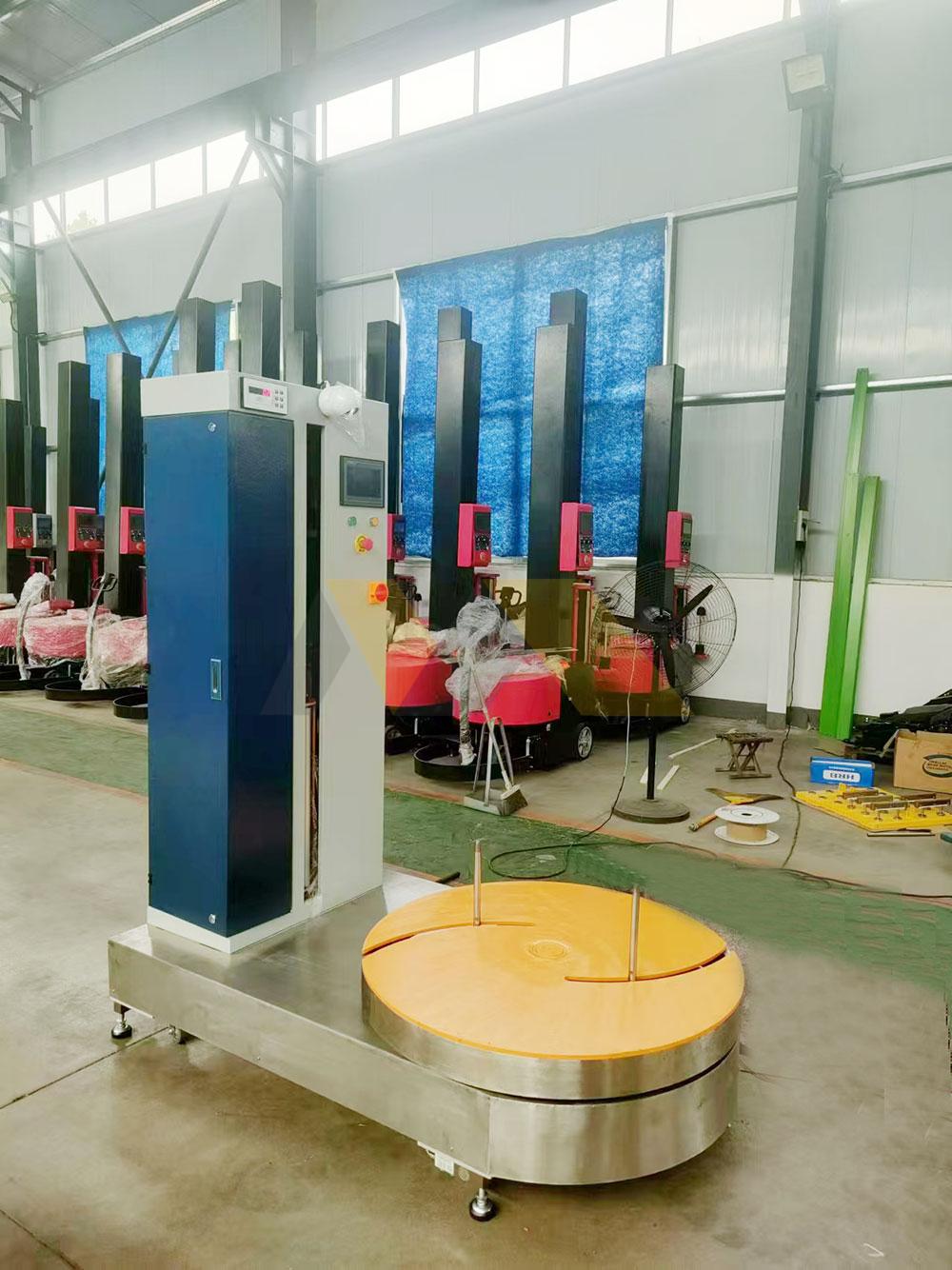
Just as precise luggage measurement is vital for airlines, accurate specification measurement is critical for ensuring a wrapping machine meets your needs. Let’s discuss the key machine specs you must verify.
Dive Deeper: Machine Measurement Precision – Beyond Length, Width, Height
Knowing how luggage is measured highlights the importance of including all protrusions – wheels, handles. This need for precision is magnified when specifying and verifying industrial machinery like a luggage wrapping machine. Getting the measurements wrong can mean the machine doesn’t fit your space, can’t handle your products, or doesn’t meet performance expectations.
While basic footprint dimensions (Length x Width x Height of the machine itself) are important for installation planning, the truly critical measurements relate to the machine’s capacity and performance based on your luggage. Here’s how we translate the concept of precise measurement to key machine specifications you must verify:
-
Maximum Load Dimensions (L x W x H or Diagonal):
- Luggage Analogy: Knowing the exact HxWxD of luggage ensures it fits the overhead bin or meets check-in limits.
- Machine Specification: This defines the largest physical size of luggage the machine can safely and effectively wrap.
- For Turntable Machines: Usually specified by maximum Length x Width the turntable can accommodate, and the maximum Wrapping Height (determined by the mast). The turntable diameter dictates the maximum width/length combination.
- For Rotating Arm Machines: Specified by the maximum diagonal the rotating arm can clear.
- Verification: Don’t assume. Provide your largest typical luggage dimensions (including wheels/handles!) to the supplier. Ensure the machine’s specified max load dimensions comfortably exceed yours. Confirm this in the spec sheet. During PSI video, seeing a load of your specified max size being wrapped is good proof.
-
Maximum Load Weight (kg / lbs):
- Luggage Analogy: Airlines have weight limits per bag.
- Machine Specification: This defines the maximum weight the turntable (or load-bearing platform for rotating arm models) can support without damage or performance degradation. Overloading can strain the turntable motor and bearing, leading to premature failure.
- Verification: Specify your heaviest typical luggage weight. Ensure the machine’s rated capacity significantly exceeds this for a safety margin. Ask about the turntable drive mechanism and bearing type – robust systems handle weight better. Confirm the max weight capacity is listed in the official specs.
-
Wrapping Height (mm / inches):
- Luggage Analogy: The height measurement is crucial for fitting in sizers.
- Machine Specification: Determined by the height of the vertical mast carrying the film carriage. It dictates the maximum height of luggage that can be fully wrapped from top to bottom.
- Verification: Ensure the machine’s wrapping height is greater than the height of your tallest typical luggage (measured standing upright, including wheels/handles).
-
Turntable Speed (RPM) / Rotational Arm Speed (RPM):
- Luggage Analogy: Not a direct luggage measure, but relates to how quickly you move through the airport.
- Machine Specification: This affects the overall cycle time (throughput). Higher RPM generally means faster wrapping, but needs to be balanced with load stability and wrap quality. Often adjustable via a Variable Frequency Drive (VFD).
- Verification: Understand the typical RPM range. Ask for the estimated cycle time (e.g., seconds per bag) for your average luggage size. Verify this during the PSI video testing.
-
Film Pre-Stretch Ratio (%):
- Luggage Analogy: Relates to the efficiency/capacity, like packing more into less space.
- Machine Specification: This measures how much the film is elongated before being applied to the load. Higher pre-stretch (e.g., 250%-300%) means you use significantly less film per wrap, saving costs. Powered pre-stretch systems are essential for achieving high ratios consistently.
- Verification: Confirm the machine has a powered pre-stretch system (not just a friction brake). Ask for the specified pre-stretch ratio range (often adjustable). Understand how it’s adjusted. This is a key feature for operational cost savings.
-
Power Requirements (Voltage, Frequency, Phase):
- Luggage Analogy: Ensuring your electronic chargers match the destination country’s voltage.
- Machine Specification: Absolutely critical for compatibility. Must match your local power supply (e.g., Canada is typically 600V/3ph, 208V/3ph or 120/240V/1ph depending on the scale and location – verify your facility’s supply).
- Verification: Clearly state your required Voltage, Frequency (Hz), and Phase in your purchase order. Double-confirm the supplier understands and will build the machine accordingly. Check the motor plates and electrical panel labeling in PSI photos/videos. Mismatched power specs can damage the machine or require expensive transformers/converters.
Precision in specifying and verifying these machine ‘measurements’ is non-negotiable. It avoids costly mistakes and ensures the machine you receive is perfectly suited to the job you need it to do. As a manufacturer, providing clear, accurate specifications and verifying them before shipment is a core part of building trust with overseas buyers like Lambert.
Conclusion
Verifying the quality of luggage wrapping machines from overseas requires diligence. Focus on scrutinizing supplier credentials, demanding detailed specs for construction and components, understanding their QC process, verifying certifications, and insisting on pre-shipment inspection. Applying principles similar to judging quality luggage – checking materials, critical components, workmanship, and support – ensures you invest wisely.

